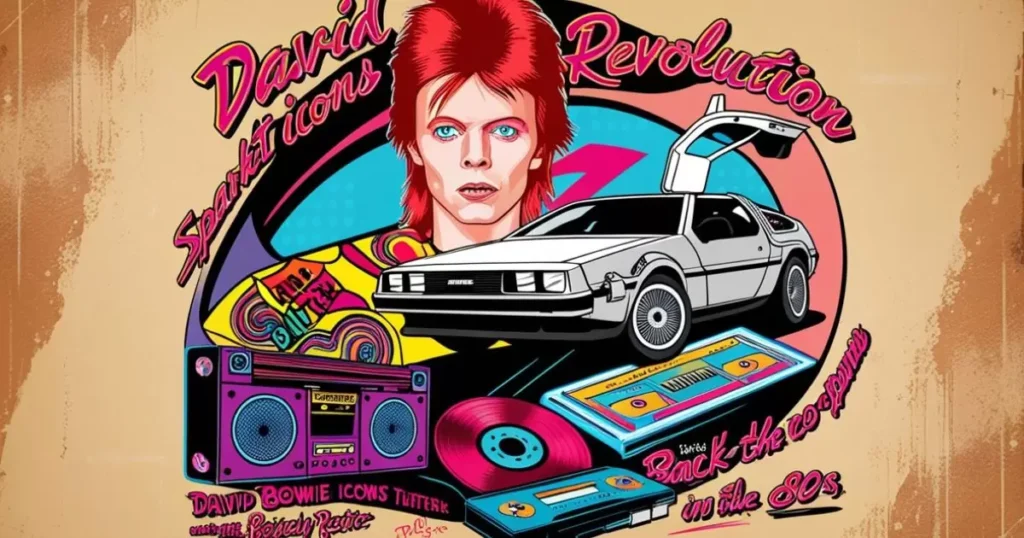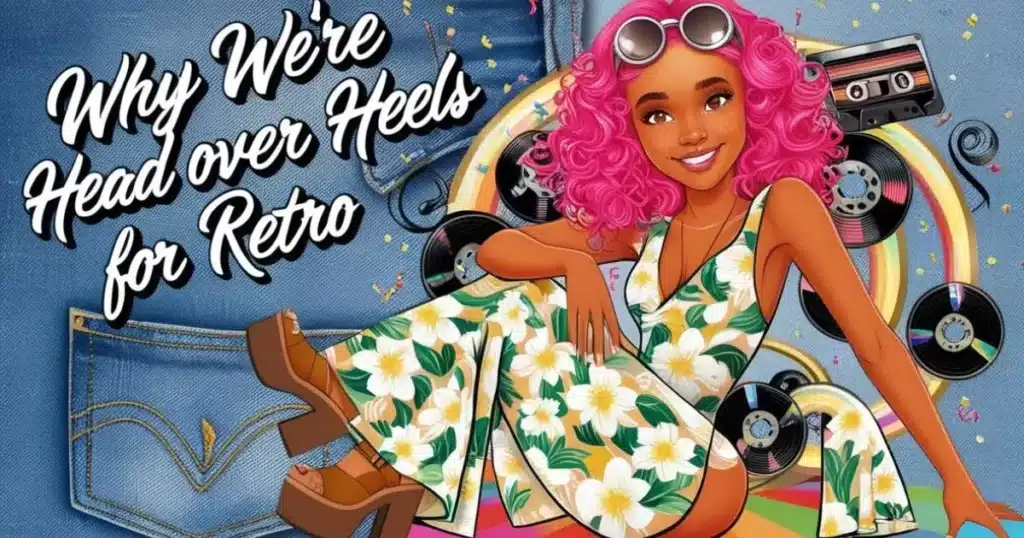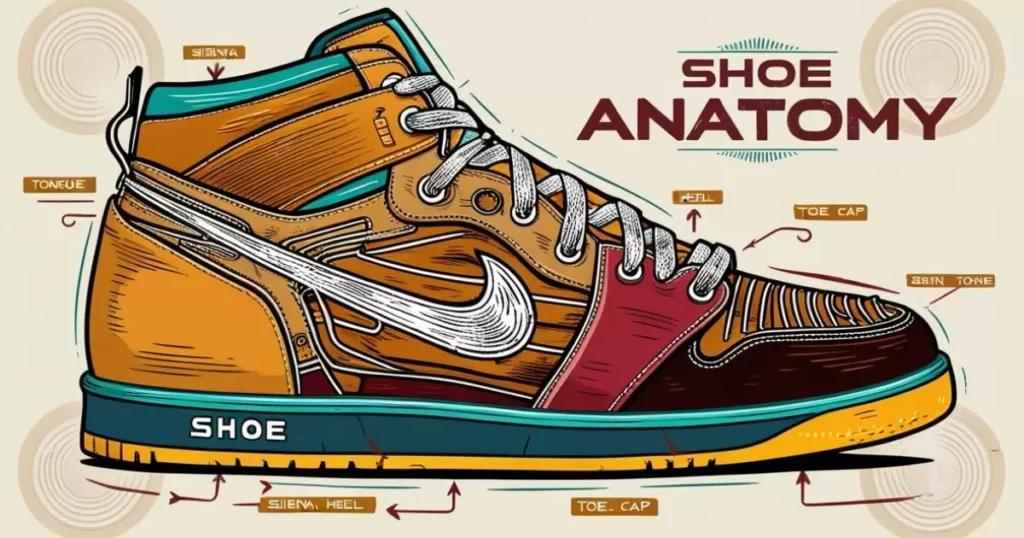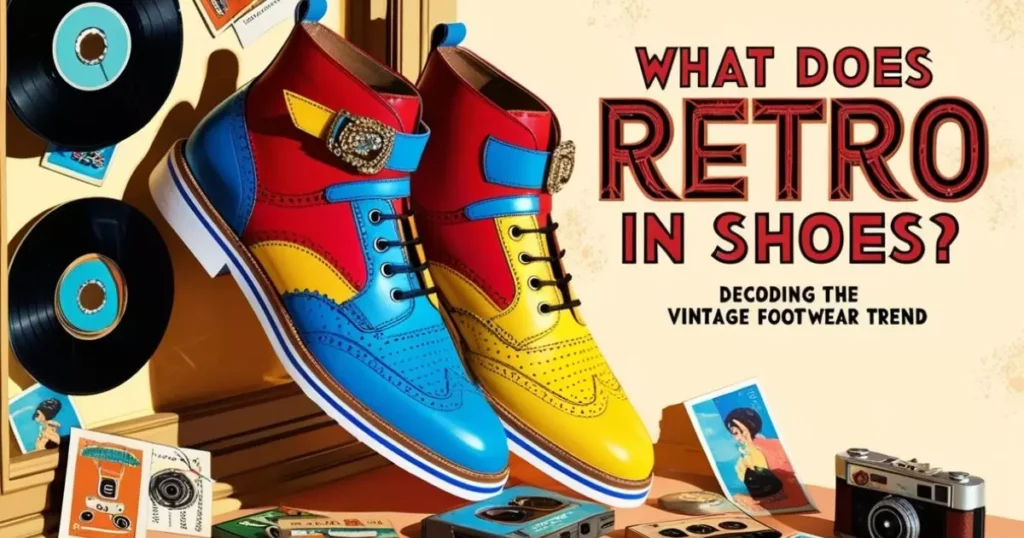In the ever-evolving world of fashion, one trend has managed to lace up its staying power: retro shoes. These blast-from-the-past kicks aren’t just riding the nostalgia wave; they’re making serious waves in the sneaker game. But what exactly does “retro” mean when it comes to shoes? Let’s step into the world of vintage-inspired footwear and unpack this trend that’s got everyone from sneakerheads to casual wearers head over heels.
Introduction: Stepping Back in Time
Remember that rush you got when you first laid eyes on those classic Air Jordans? Or the way your heart skipped a beat when you spotted a pair of old-school Adidas Superstars? That’s the allure of nostalgia in fashion, my friends. It’s not just about wearing shoes; it’s about stepping into a time machine with every stride.
Retro shoes aren’t just rehashed designs from yesteryear. They’re a bridge between generations, a conversation starter, and sometimes, a serious investment. But make no mistake – these aren’t your grandpa’s dusty old kicks we’re talking about. Retro in the shoe game is a whole different ball game.
Defining Retro in Footwear: Not Just Your Grandpa’s Kicks
So, what makes a shoe “retro”? It’s not as simple as slapping an old logo on a new sole. Retro shoes are carefully crafted homages to iconic designs of the past, often with modern tweaks for today’s feet. Think of them as the best of both worlds – classic style meets contemporary comfort.
But here’s where it gets tricky: not all old shoes are retro, and not all retro shoes are old. Confused? Let’s break it down:
- Vintage: Original shoes from a past era
- Retro: New shoes inspired by or replicating vintage designs
- Throwback: Limited re-releases of classic models
The key difference? Retro shoes are new productions that capture the essence of the past. It’s like watching a remastered version of your favorite classic movie – same story, better picture quality.
The Birth of Cool: Origins of Retro Sneakers
To understand the retro craze, we need to lace up our time-traveling shoes and head back to where it all began. Sneakers started as purely functional athletic gear, but somewhere along the line, they crossed over into the realm of fashion.
From Function to Fashion: The Evolution of Athletic Shoes
- 1917: Converse All-Stars hit the market
- 1924: Adi Dassler creates the first Adidas shoe
- 1964: Nike (then Blue Ribbon Sports) founded
- 1970s: Jogging boom popularizes sneakers for everyday wear
- 1980s: Hip-hop culture embraces sneakers as a style statement
Cultural Icons That Sparked the Retro Revolution

It wasn’t just about the shoes; it was about who wore them. Here’s a quick rundown of some game-changers:
- Run-DMC: Made Adidas Superstars a hip-hop staple
- Michael Jordan: Turned basketball shoes into coveted fashion items
- Back to the Future II: Made us all want self-lacing Nikes
These cultural touchstones didn’t just sell shoes; they sold dreams, identities, and a piece of history.
Retro Sneakers: A Timeline of Trendsetting
Let’s take a walk through the decades that shaped the retro sneaker trend:
1970s: The Dawn of Sneaker Culture
- Key Players: Nike, Adidas, Puma
- Iconic Releases:
- Nike Cortez (1972)
- Puma Clyde (1973)
- Adidas Stan Smith (1978)
1980s: When Sneakers Met Hip-Hop
- Cultural Shift: Sneakers become status symbols
- Game-Changers:
- Air Jordan 1 (1985)
- Adidas Superstar’s rise in hip-hop culture
1990s: The Golden Age of Basketball Shoes
- Tech Boom: Air bubbles, Pump technology
- Standout Styles:
- Nike Air Max 95
- Reebok Pump Fury
- Fila Grant Hill
2000s and Beyond: Retro Goes Mainstream
- Trend: Brands start re-releasing classic models
- Phenomenon: Limited edition “drops” create hype
Slam Dunk Nostalgia: The NBA’s Influence on Retro Sneakers
You can’t talk retro sneakers without talking hoops. The NBA has been a driving force in sneaker culture, turning the court into a runway for some of the most iconic shoe designs in history.
Michael Jordan and the Air Jordan Phenomenon
It’s impossible to overstate MJ’s impact on sneaker culture. Here’s why Air Jordans are the GOAT of retro kicks:
- Cultural Impact: Transcended basketball to become a fashion staple
- Design Innovation: Each release pushed the boundaries of shoe tech and style
- Scarcity: Limited releases created a collector’s market
- Star Power: Jordan’s on-court prowess made the shoes legendary
“I’ve failed over and over and over again in my life. And that is why I succeed.” – Michael Jordan
This philosophy didn’t just apply to basketball; it became the ethos of sneaker culture – always pushing for the next big thing while respecting the classics.
Other NBA Legends Who Left Their Mark on Shoe Design
- Kobe Bryant: Nike Zoom Kobe series
- LeBron James: Nike LeBron line
- Allen Iverson: Reebok Question and Answer series
Each of these players brought their unique style and attitude to their signature shoes, creating instant classics that are still sought after in retro form today.
Why We’re Head Over Heels for Retro

The retro sneaker craze isn’t just about fashion; it’s deeply rooted in psychology and clever marketing. Let’s lace up and dive into why these old-school kicks keep us coming back for more.
The Psychology Behind Retro Appeal
- Nostalgia: Retro shoes tap into our fondness for the past
- Identity: Wearing retro kicks can signal cultural knowledge and taste
- Uniqueness: In a world of mass production, retro shoes stand out
- Comfort: Familiar designs offer a sense of security
How Brands Leverage Nostalgia in Marketing
Sneaker companies aren’t just selling shoes; they’re selling memories. Here’s how they do it:
- Limited Releases: Creating artificial scarcity
- Collaborations: Partnering with artists and celebrities
- Storytelling: Connecting shoes to cultural moments
- Anniversary Editions: Celebrating milestones of iconic models
Retro Shoes as Fashion Statements
Gone are the days when sneakers were just for the gym. Retro kicks have strutted their way from the court to the catwalk, becoming a staple in fashion-forward wardrobes.
From the Court to the Catwalk
High-fashion brands like Gucci and Balenciaga have embraced the retro sneaker trend, creating luxury versions of classic styles. This high-low mix has redefined what’s considered “fashionable” footwear.
Styling Tips: How to Rock Retro Kicks in 2024
- Dress them up: Pair retro sneakers with tailored trousers for a smart-casual look
- Go monochrome: Match your sneakers to your outfit for a sleek, cohesive style
- Contrast is key: Use bold, colorful retro shoes to accent a neutral outfit
- Sock game strong: Show off your ankles with no-show socks or make a statement with bold patterns
- Cuff it up: Roll your jeans or trousers to showcase your kicks
Inside the Sneakerhead Subculture
The world of retro sneakers isn’t just a market; it’s a community. Sneakerheads have turned collecting kicks into an art form, complete with its own language and customs.
Collecting, Trading, and the Art of the “Cop”
- Copping: Successfully purchasing a coveted pair of sneakers
- Grails: The holy grail of sneakers; a collector’s most desired pair
- Deadstock: Unworn, mint condition sneakers
- Colorway: The color scheme of a sneaker
The Role of Retro Releases in Sneaker Culture
Retro releases are the lifeblood of sneaker culture. They:
- Keep classic designs relevant
- Introduce new generations to iconic styles
- Drive the resale market
- Fuel creativity in custom sneaker design
The Retro Shoe Market: Big Business in Old-School Cool
The retro sneaker market isn’t just big; it’s massive. In 2020, the global sneaker market was valued at $79 billion, with retro styles making up a significant chunk of that pie.
Limited Releases and Artificial Scarcity
Brands have mastered the art of hype through limited releases. By producing fewer pairs than demand requires, they create:
- Increased desire for the product
- Higher resale values
- A sense of exclusivity for owners
The Resale Market: When Old Shoes Are Worth Their Weight in Gold
The resale market for retro sneakers is booming. Some eye-popping figures:
| Sneaker | Original Retail Price | Average Resale Price |
| Air Jordan 1 “Chicago” (1985) | $65 | $20,000+ |
| Nike MAG “Back to the Future” | $2,300 | $40,000+ |
| Adidas Yeezy Boost 750 “OG” | $350 | $1,500+ |
Not Just a Fad: The Staying Power of Retro Shoes
Unlike many fashion trends that burn bright and fade fast, retro sneakers have shown remarkable staying power. But why?
Why Retro Designs Continue to Resonate
- Versatility: Classic designs work with various styles
- Quality: Often made with better materials than mass-market shoes
- Story: Each retro model carries a piece of cultural history
- Comfort: Time-tested designs often prioritize wearability
The Cycle of Revival: Predicting Future Retro Trends
Fashion operates in cycles, and sneakers are no exception. We’re seeing:
- Y2K Revival: Early 2000s chunky sneakers making a comeback
- 90s Tech: Futuristic designs from the 90s getting modern updates
- Sustainable Retro: Classic designs reimagined with eco-friendly materials
Anatomy of a Retro Shoe: What Sets Them Apart

Retro shoes aren’t just about looks; they’re a careful balance of old-school aesthetics and modern technology. Let’s break down what makes a retro kick tick.
Design Elements That Scream “Throwback”
- Chunky Soles: A hallmark of many 80s and 90s designs
- Bold Colorways: Vibrant color combinations that pop
- Vintage Logos: Original or slightly modified brand emblems
- Simple Lines: Clean, uncomplicated silhouettes
Materials and Manufacturing: Old-School vs. New Tech
While retro shoes look old-school, they often incorporate modern tech:
| Old-School Features | Modern Updates |
| Leather uppers | Engineered mesh |
| Basic cushioning | Advanced foam technologies |
| Standard lacing | Auto-lacing systems |
| Limited sizing | Extended size ranges |
Iconic Retro Kicks: A Hall of Fame
Every sneakerhead has their list of all-time greats, but some retro models are universally revered. Let’s lace up a few legends:
Air Jordan: The GOAT of Retro Sneakers
- Air Jordan 1: The shoe that started it all
- Air Jordan 3: Introduced the Jumpman logo
- Air Jordan 11: Patent leather changed the game
Nike’s Greatest Hits
- Air Max 1: Visible Air unit revolutionized cushioning
- Cortez: Nike’s first track shoe, later embraced by street culture
- Dunk: From basketball courts to skate parks to high fashion
Adidas Classics
- Superstar: The shell toe that conquered hip-hop
- Stan Smith: Tennis shoe turned fashion staple
- Gazelle: The versatile suede sneaker loved by Brit-pop stars
Other Brands Making Retro Waves
- Reebok Classic Leather: Timeless simplicity
- Puma Suede: A favorite among b-boys and rock stars
- Vans Old Skool: Skate culture’s enduring contribution to fashion
Retro vs. New: The Great Debate
As technology advances, the question arises: are retro shoes just rose-tinted nostalgia, or do they hold up against modern designs?
Comfort and Performance: Have We Really Come That Far?
- Pros of Retro: Time-tested designs, often more durable
- Cons of Retro: May lack latest cushioning tech
- Pros of New: Cutting-edge materials, data-driven design
- Cons of New: Sometimes prioritize trends over comfort
Sustainability Concerns: Is Retro More Eco-Friendly?
In an age of fast fashion, retro shoes might actually be the more sustainable choice:
- Durability: Classic designs often last longer
- Timelessness: Less likely to go out of style, reducing waste
- Repairability: Simpler constructions are often easier to fix
However, many brands are now focusing on eco-friendly materials and manufacturing processes for both retro and new designs.
The Future of Retro: What’s Old is New Again
As we look to the future, it’s clear that retro sneakers aren’t going anywhere. But how will they evolve?
Upcoming Retro Releases to Watch For
- Air Jordan 1 “Lost and Found”: A nod to the original’s discovery story
- Adidas Forum 84: Bringing back 80s basketball vibes
- Nike Air Max 1 “Big Bubble”: Recreating a mythical prototype
How Brands Are Innovating Within the Retro Space
- 3D Printing: Allowing for more precise recreations of vintage designs
- Sustainable Materials: Reimagining classics with eco-friendly components
- Customization: Offering personalized touches to retro models
- Digital Integration: Adding smart features to classic silhouettes
Frequently Asked Questions
- What styles are considered retro shoes?
- Common retro styles mimic iconic shoe designs from the 70s, 80s, and 90s like chunky sneakers, platform shoes, athletic shoes, and skate shoes.
- What qualities make a shoe retro?
- Retro shoes use vintage colors, materials, and silhouettes found in shoes from the past to evoke nostalgia through elements like bold colors, synthetic leathers, and exaggerated proportions.
- Which decades do retro shoes usually draw inspiration from?
- The 70s, 80s, and 90s are very popular eras for retro shoe designs to take influence from in reimagining classic styles through a modern lens.
- What are some examples of retro shoe brands?
- Top retro sneaker brands include Vans, Converse, Puma, and Fila – companies known for continually re-releasing authentic versions of their archive styles.
- Why are retro shoes popular?
- People enjoy retro shoe styles as a nod to footwear they remember from their youth or the past. It allows them to recapture the nostalgia of eras through what they wear.
Conclusion: Lacing Up the Legacy
As we’ve seen, retro sneakers are more than just shoes; they’re time capsules, status symbols, and works of art rolled into one. They connect us to our past while stepping boldly into the future.
The enduring appeal of retro sneakers lies in their ability to blend nostalgia with novelty. They remind us of where we’ve been while exciting us about where we’re going. Whether you’re a die-hard collector or just someone who appreciates a good-looking kick, there’s a retro shoe out there with your name on it.
So the next time you lace up a pair of retro sneakers, remember: you’re not just wearing shoes. You’re carrying a piece of history, making a fashion statement, and maybe even investing in a future collector’s item. In the world of footwear, what’s old is perpetually new again – and that’s exactly how we like it.

An author is a creator of written content, producing works ranging from books and articles to blog posts and essays. They use their creativity, knowledge, and research to inform, entertain, or persuade readers. Authors often have a unique voice and perspective, contributing significantly to literature and various media.

